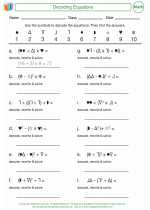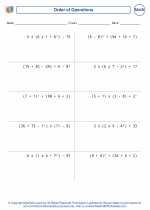Complementary Angles
Complementary angles are two angles whose measures add up to 90 degrees. In other words, when you add the measures of two complementary angles together, the sum is always 90 degrees.
Example:
Let's consider two angles, angle A and angle B. If angle A measures 30 degrees, then angle B measures 60 degrees. Angle A and angle B are complementary angles because 30 + 60 = 90 degrees.
Properties of Complementary Angles:
- Complementary angles always add up to 90 degrees.
- One of the complementary angles is always the complement of the other.
- Complementary angles do not have to be adjacent or next to each other.
Study Guide:
Here are some key points to remember about complementary angles:
- Complementary angles add up to 90 degrees.
- Complementary angles can be represented as a pair of angles (A, B) where A + B = 90 degrees.
- Complementary angles are commonly found in right triangles, where one angle is the complement of the other acute angle.
- When solving for complementary angles, you can use the equation A + B = 90 to find the measure of one angle when the other is known.
Understanding complementary angles is important in geometry and can help in solving various problems related to angles and geometric shapes.
Remember, complementary angles always add up to 90 degrees and are crucial in many geometric concepts and calculations.
[Complementary Angles] Related Worksheets and Study Guides:
.◂Math Worksheets and Study Guides Fifth Grade. Order of Operations
Study Guide Order of Operations
Order of Operations  Activity Lesson
Activity Lesson Decoding Equations
Decoding Equations  Worksheet/Answer key
Worksheet/Answer key Order of Operations
Order of Operations  Worksheet/Answer key
Worksheet/Answer key Order of Operations
Order of Operations  Worksheet/Answer key
Worksheet/Answer key Order of Operations
Order of Operations  Worksheet/Answer key
Worksheet/Answer key Order Of Operations
Order Of Operations 

 Activity Lesson
Activity Lesson
 Worksheet/Answer key
Worksheet/Answer key
 Worksheet/Answer key
Worksheet/Answer key
 Worksheet/Answer key
Worksheet/Answer key
 Worksheet/Answer key
Worksheet/Answer key

The resources above cover the following skills:
Algebra (NCTM)
Use mathematical models to represent and understand quantitative relationships.
Model problem situations with objects and use representations such as graphs, tables, and equations to draw conclusions.
Connections to the Grade 5 Focal Points (NCTM)
Algebra: Students use patterns, models, and relationships as contexts for writing and solving simple equations and inequalities. They create graphs of simple equations. They explore prime and composite numbers and discover concepts related to the addition and subtraction of fractions as they use factors and multiples, including applications of common factors and common multiples. They develop an understanding of the order of operations and use it for all operations.